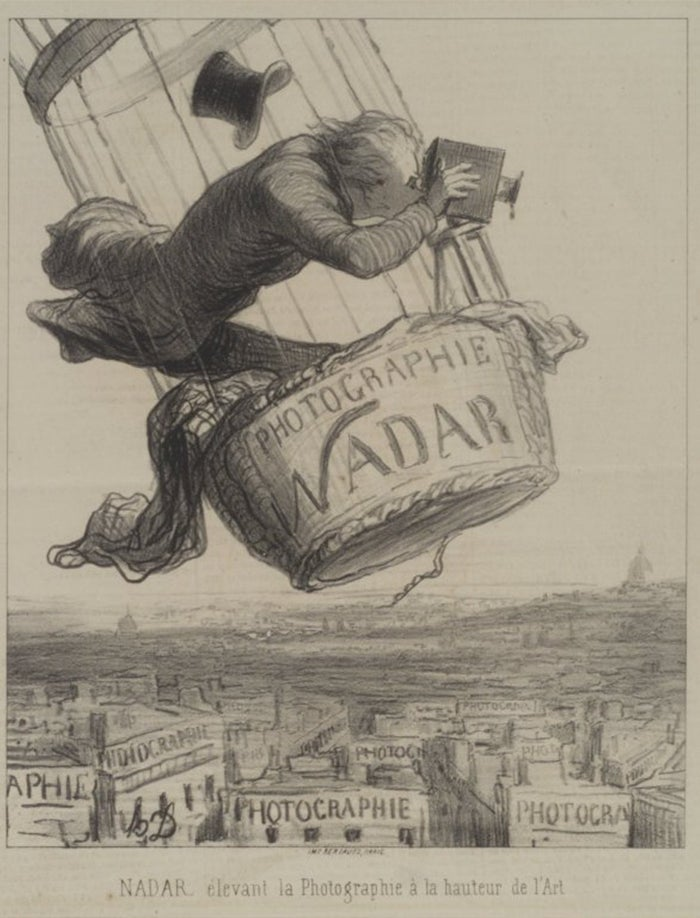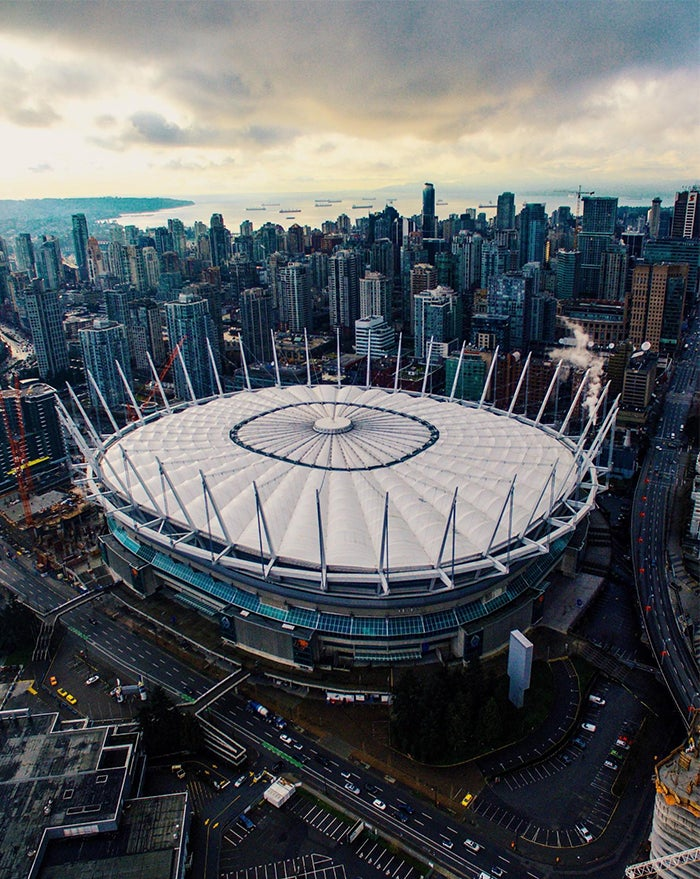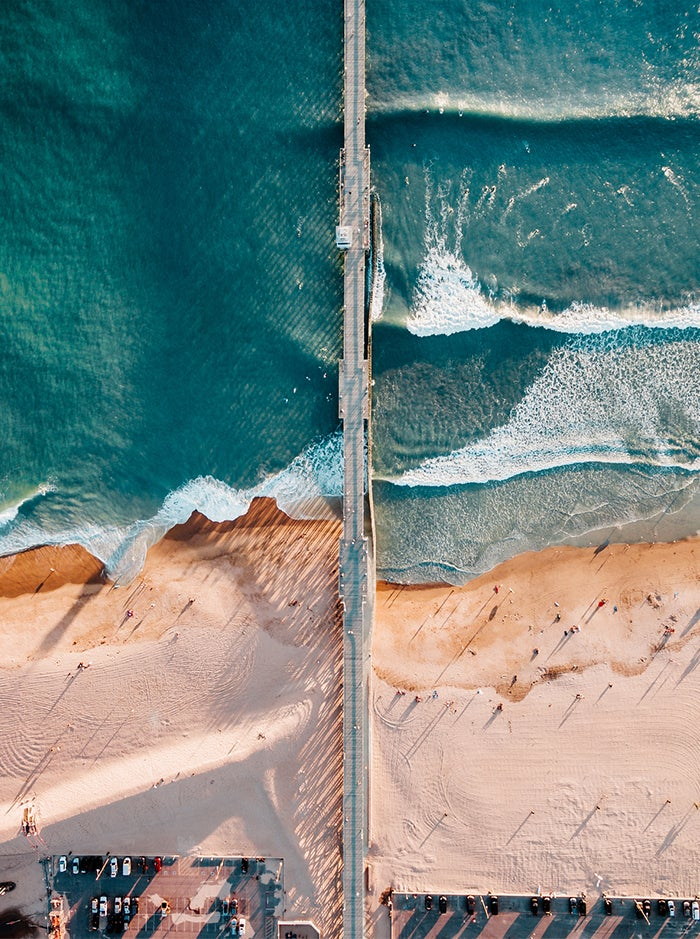Extending Your Reality: What Happens When You Let a Drone Carry Your Camera Away
A look at drone technology past, present, and future.

“Dana Point Harbor” Image Source: keithkman
Drones are changing the way artists approach their work, and the trend is catching on fast. Online sales for drone cameras are up 165 percent year-over-year, and 770,000 drones are already registered with the FAA. As photographers jump into the field, images from above are starting to integrate into design, too. We’re seeing them in news articles and art pieces, and people are seeking them out in Adobe Stock — searches for drone photography grew 5 percent between 2015 and 2017.
The drone trend is interesting as we look at new ways we’re bridging the space between our physical and digital experiences. With a drone, photographers experience extended reality (ER) by directing their cameras — and their vision — to a place that’s separate from their own physical location.
Since more and more photographers are exploring this new kind of reality from above, we decided to take a closer look at drones’ humble beginnings (way before anyone had ever heard of artificial or extended reality), get a glimpse at where they’re heading, and ask artists how drones inspire their work.

The first aerial technology utilized technology like balloons to capture images.
Born in a balloon.
The beginning of aerial photography technology goes back almost to the beginning of photography itself. In 1858, a French caricaturist and novelist turned portrait photographer, Gaspard-Félix Tournachon, was the first to hack together the tech for an aerial photo shoot. To do so, he climbed into a tethered hot air balloon, lugging along all of the supplies he needed to prepare and develop his plates in the basket, and floated up to 262 feet above land. From there, he took photos of the French village of Petit-Bicetre. The images have since been lost, but the idea stuck. Tournachon’s fellow photographers followed his lead with their own twists, attaching cameras to kites, rockets, and even carrier pigeons.
By the early 1900s, the technology and the times were just right for aerial photography to come into its own — no pigeons required. Kodak had invented the Brownie Box camera, the first airplanes took flight, and World War I gave new purpose to photos from above — spying. Once the war ended, photographers created a commercial niche for aerial photography in mapping and surveying. World War II and the Space Race gave photographers even more altitude for their images.
The race for premier drone technology.
Modern drone technology has been improving at an astonishing rate. keithkman, a photographer who tests new drone technology and camera filters, gave us insight into just how intense the innovation is right now.
“The technology is getting better and better for small camera applications, and I believe smartphones — and now drones — have sped up that process,” Keith says. He told us about the DJI Phantom 4, which came out in March 2016 with a 12.4 megapixel image. Just eight months later, the DJI Phantom Pro hit the market loaded with new features for adjustability while flying — using an app on the ground — and the ability to produce a 20 megapixel image.
The options for what drone photographers can do with their cameras are changing quickly, too. Consider, for example, 3D mapping. According to Keith, “It’s one of the most creative uses of drones I’ve seen. There are third-party programs that allow the user to select a point of interest, and the app does the rest. It will program the drone on a special flight path above the point of interest, take a couple thousand photos, merge them together in software, and then produce a 3D model of the point of interest.”
Considering the pace of development, Keith’s predictions for what’s just around the corner include drones that are easier to fly and harder to crash, more automation so the user doesn’t need to give as much input to get the perfect shot, and overall higher photo quality.
Creative inspiration and activism at 400 feet.
The development of aerial photo technology isn’t all spies and surveys. The view from above is also about finding hidden beauty and inspiration.
Xander DePascale, for one, tried out a drone on a whim and found his passion. “I love the rush you get when you take off from a new spot and see something you’ve seen maybe a hundred times, but from a completely new perspective.”

Image Source: Xander DePascale
For Ryan Longnecker, an outdoor and travel photographer who uses drones for his work, the magic comes from seeing patterns and colors from above and thinking of them as an artistic composition. “I try to not take a picture that communicates a particular place,” explains Ryan. “Instead, I look at my image as if it were an art canvas and ask myself, ‘Where do I like the lines? Where are there interesting colors?’ I look at it as a fine art piece, so it’s a lot more about the elements within the picture than the place itself.”

Image Source: Ryan Longnecker
From his experiences photographing nature, Ryan notes the power aerial photos have to bring urgency to environmental issues. “I hope people can use drone photography and videography to emphasize the need to care for the environment, using it to highlight melting ice caps, eroding landscapes, and pollution. In a few years we could have aerial environmental activism.”
Drone technology also offers an unprecedented opportunity for photographers to capture political realities we can’t see from the ground. In some cases, like war zones, natural disasters, and hazardous sites, drones can go where photographers can’t. In other cases, drones show the bigger picture of sociopolitical realities that are hard to decipher from the ground. Take, for example, the work of Cape Town-based photographer Johnny Miller. His series Unequal Scenes, shows the stark differences between where the rich and poor live in South Africa.
“I’ve spent a long time trying to take people’s photographs in a way that accurately captures people’s suffering, their story, and nothing really hit,” explains Johnny. “But the minute I flew above them — into the sky so that they became little dots on the landscape — that’s when people started paying attention.”

Papwa Sewgolum Golf Course. Image Source: Johnny Miller
Drone photography is also poised to play a role in emerging immersive technologies, from 360-degree aerial images where the viewer can choose what to explore to interactive virtual reality (VR) applications.
Your own state-of-the-art setup.
If you’re thinking of jumping into drone photography for the first time, there’s a lot to consider when it comes to gear — and a mind-boggling range of prices and tech options. Experts suggest starting out with a relatively inexpensive model, mostly because learning to fly can involve a lot of crashing. As you get the feel for piloting, you may want to invest in a setup with more features, or a higher-quality camera. Since drone technology is changing so quickly, the latest review roundups (like this one and this one) can guide you through the process.
(Above the) ground rules.
While drone photography is all about unique perspectives, there’s one thing all of the artists we talked to agreed on: knowing the rules is critical. In the United States, regulations govern how, where, and what you can fly, down to some pretty specific details. Drone pilots must be at least 16 years old and hold a remote pilot airman certificate. Drones (including their cameras) can’t weigh more than 55 pounds or soar above 400 feet, and they must always yield to manned aircraft.
Before you start, it’s a good idea to review all of the rules. Know Before You Fly is a great place to read up. And if you’re snapping aerial photos outside the United States, make sure you research the local rules of the sky.
The licensing and regulations are critical for protecting everyone’s safety and privacy, and they’re still evolving. As Xander notes, it may make sense, as more hobbyists enter the field, to develop a system of licensing that gives more opportunities to trained professionals. No matter what your skill level, it’s important to keep an eye out as regulations try to keep pace with tech development.
Reinspired from above.
Drones give us an extended look at reality that we don’t usually have in our daily lives. And the best thing about that — according to almost everyone we asked — is the absolute joy of finding a new perspective.
“I would encourage people to rent a drone, or buy one, or borrow one, or hang out with a person who has one because if you work in this kind of creative field, it’s really easy to forget what it feels like to take a picture and have it be a lot of fun,” Ryan says. “Aerial photography and the technology behind it restores that part of you that feels like this is a hobby; this is something I can have a good time with. And that in turn will help you be a better artist.”
To learn about more emerging technologies that are changing the way we work and interact, read more articles in our “Beyond the Screen” collection.